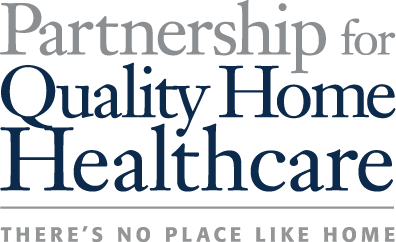September 11, 2017
Congress: Help protect home health for America’s seniors
Posted in: News
The Hill Congress Blog
While Medicare’s skilled home health benefit is successfully saving the program money and keeping patients healthy and happy at home, it’s an area where big changes stand to do big damage. One of those changes comes as part of the federal government’s new proposal on how to pay home health agencies.
Created without any input from home health leaders, the new payment system, the Home Health Groupings Model (HHGM), comes at a time when federal policies continue to push more care into the most cost-effective settings at home. HHGM, however, serves as a significant obstacle – challenging the home health community’s ability to deliver the type of quality care that Medicare beneficiaries want.
Under HHGM, Medicare would redistribute payments away from medically-necessary home health services that are currently producing Medicare savings, such as physical and occupational therapy at home, and send them to more expensive hospital- and office-based care.
The writing is already on the wall for providers of home health, their patients, and for Medicare. As a non-budget-neutral payment proposal, HHGM will cut home health reimbursement by as much as $950 million in 2019 alone. We know from past experience that non-budget neutral reforms can be disastrous. In fact, the Interim Payment System, which CMS used between 1998 and 2000 while the current Prospective Payment System was still under development, caused significant harm and took years to repair. Nearly 1.5 million Medicare beneficiaries lost access to care following the closure of more than 4,000 home health agencies.
Keeping Medicare’s home health services sustainable for the many Americans who depend on them is critical as growing numbers of patients enter the system. Especially in areas of the country where home health providers are already under significant strain, HHGM will seriously undermine the progress we’ve already made.
Unfortunately, in these struggling areas of the country – many of which are rural – HHGM isn’t the only troubling threat.
The rural safeguard – a three percent payment differential for providers operating in rural settings – is set to expire at the end of the year. Implemented by Congress in 2000, it’s a crucial protection for rural providers whose travel and staffing costs are greater than their urban counterparts.
Studies have clearly demonstrated that home health in rural areas works, if we adequately support it. Rural Medicare beneficiaries frequently live more than twice as far from their doctor and nearly twice as far from the nearest hospital compared to beneficiaries in an urban setting. But fortunately, home health providers can serve as the primary caregivers for their patients who are homebound and have limited access to transportation. They are resources well spent, considering Medicare spends nearly three times as much on other post-acute care services per beneficiary annually than it does on home health ($13,259 versus $5,370).
For the millions of Americans who receive care at home – and the millions more who will eventually want the same – protecting and improving upon the Medicare home health benefit is the smart thing to do.
This week, hundreds of home health representatives are meeting with lawmakers in Congress to express our deep concerns with HHGM and reinforce the critical importance of the rural safeguard. We are depending on Congress to extend the rural safeguard before the end of the year while working with us to urge CMS to withdraw the proposed HHGM and instead work with home health leaders to implement payment reform that protects home healthcare for the vulnerable individuals who need it.
Tim Rogers is Chairman of the Council of State Home Care Associations and Vicki Hoak is Immediate Past Chair of Council of State Home Care Associations.
Click here to see the original article on The Hill Congress Blog.
